With quick back-and-forth comedy, clever writing, and a talented cast, Brooklyn Nine-Nine has earned its spot as one of the most side-splitting half-hour comedy TV shows of the last ten years. But most people don’t think of it when they picture a good reference for diversity in network sitcoms. After all, it’s a workplace comedy about goofy cops where Andy Samberg plays the lead. But Brooklyn Nine-Nine is one of the rare, high-profile comedy shows that demonstrate how diversity makes for better TV and storytelling.
So, how does Brooklyn Nine-Nine do diversity right?
The Characters are Not Defined by their Race or Sexuality
Each member of the squad has their own individuality. Through characterization and avoiding stereotypes, we start to see them as three-dimensional people. While their race, gender, and sexuality are not ignored, their identity isn’t the extent of their character. For example, Rosa Diaz and Amy Santiago are both Latina police officers. In the show, they don’t constantly mention their ethnicity but instead casually refer to it, like a person would in real life. The other members of the precinct relate to them more through the fabric of character and the comedy comes from that. Amy is a Type-A who gets off on organization and Rosa is a rebel who never talks about her emotions.
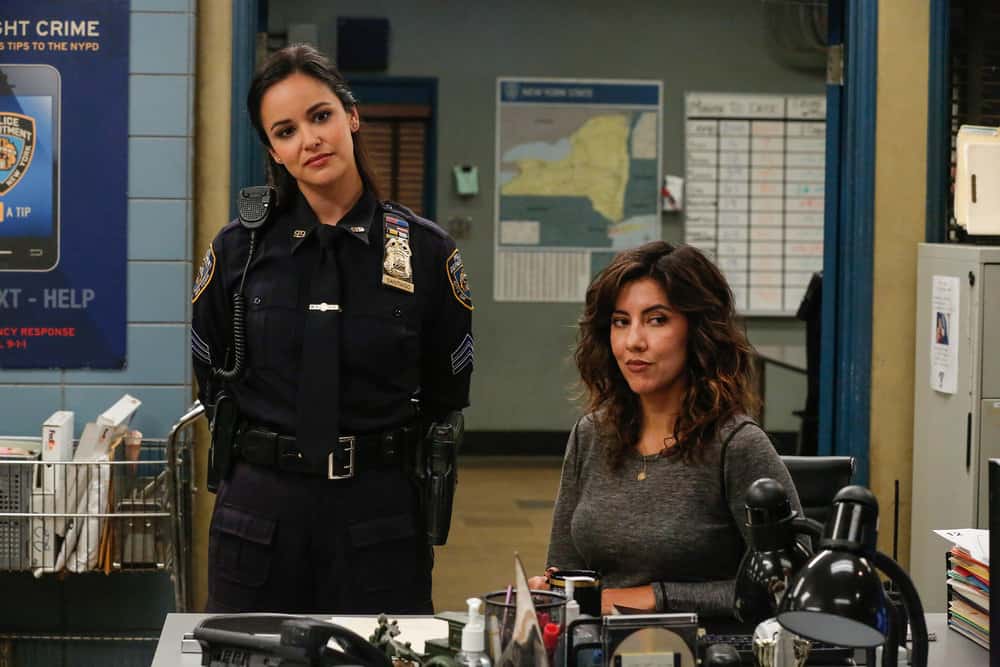
Another part of the squad is Captain Holt, a gay, Black police captain. He has a husband and likes classical music, but at work, he’s mostly known for his robot-like love of order and precision. The jokes directed at these characters’ expense are not based on things they cannot change (like their race/ethnicity or sexuality) but on the personality traits they exhibit through their aforementioned quirks. A TV show that wanted to forcefully shoehorn diversity without having real, relatable characters like these would have had the Captain’s sexuality and race (or Amy and Rosa’s ethnicity) as the punchline for their jokes, playing the unchangeable essence of their characters for laughs. In Brooklyn Nine-Nine, their race and sexuality are just one of the facets that make up their character. The comedy comes mostly through the characters’ distinctive mannerisms.
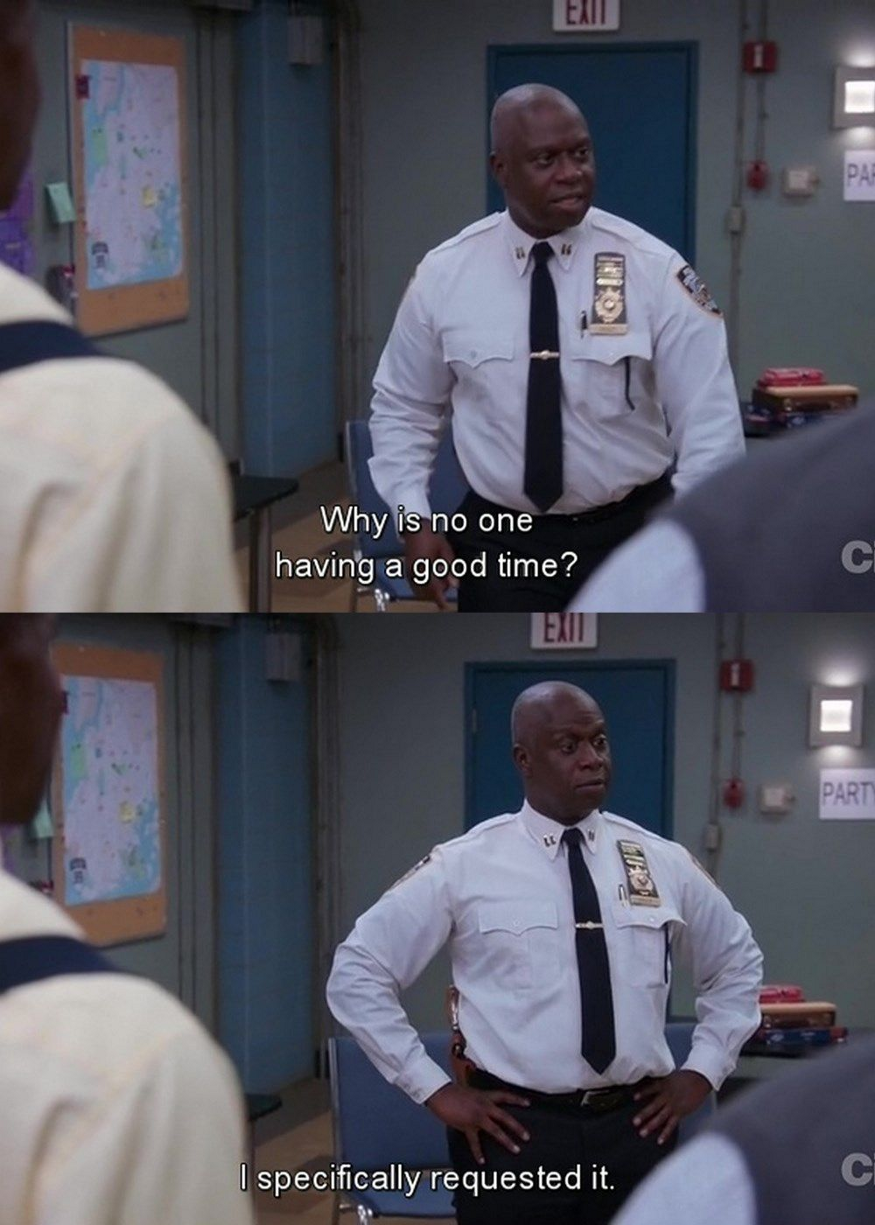
On the other side of the spectrum, Hitchcock and Scully are two straight, middle-aged white men who are more inappropriate than the rest of the squad. The humor that stems from these two characters is directed mostly at them and not shared with them; there’s a difference. Their inappropriate behavior is not accepted and is called out. The butt of the joke is rather “just how gross, gluttonous, out-of-touch or lazy can Hitchcock and Scully be?” as opposed to a complicit acceptance of their off-handed remarks.
The Precinct Exhibits Respect and Self-Awareness
When Charles has a crush on Rosa in the first season and she doesn’t reciprocate his feelings, he doesn’t press the issue, make her feel uncomfortable, or try to convince her. Instead, he understands, moves his affections towards someone else, and treats her as a friend and respected colleague. In that same season, he even takes a bullet for her. But it was only out of professional duty and never expects any affection in return. He is also a big supporter of her subsequent love life!
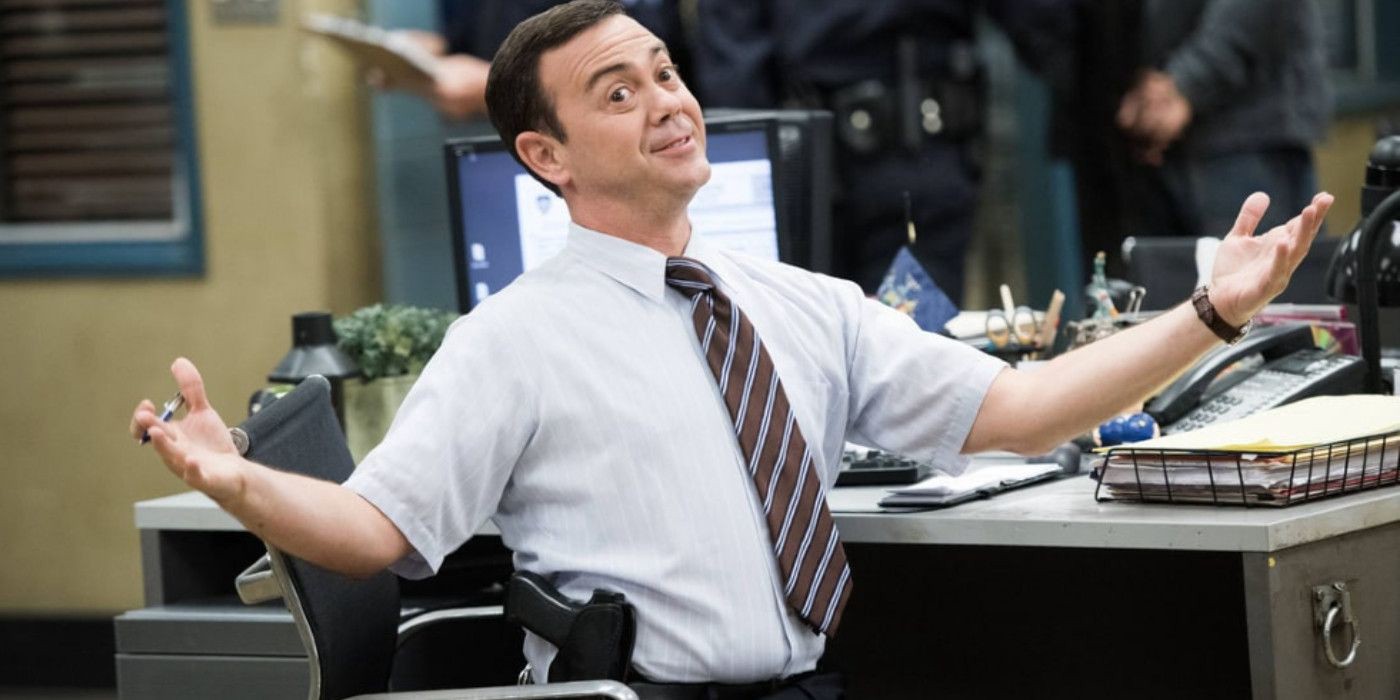
Also, Jake is acutely aware of his male privilege and toxic masculinity and attempts to dismantle it — not an easy feat for a cop whose favorite movie is Die Hard. He respects Amy’s choices and refuses to let his attraction to her interfere with her romantic life, punches one of his idols when he uses a homophobic slur against Holt, and repeatedly shuts down other mens’ casual misogyny.
The show tackles uncomfortable topics
Though it’s a comedy, Brooklyn Nine-Nine doesn’t shy away from some pretty heavy topics. A run-of-the-mill sitcom might explore some darker realities (maybe in the form of an anti-drugs PSA) but this show goes to the heart of some current issues, like racial profiling and sexual harassment.
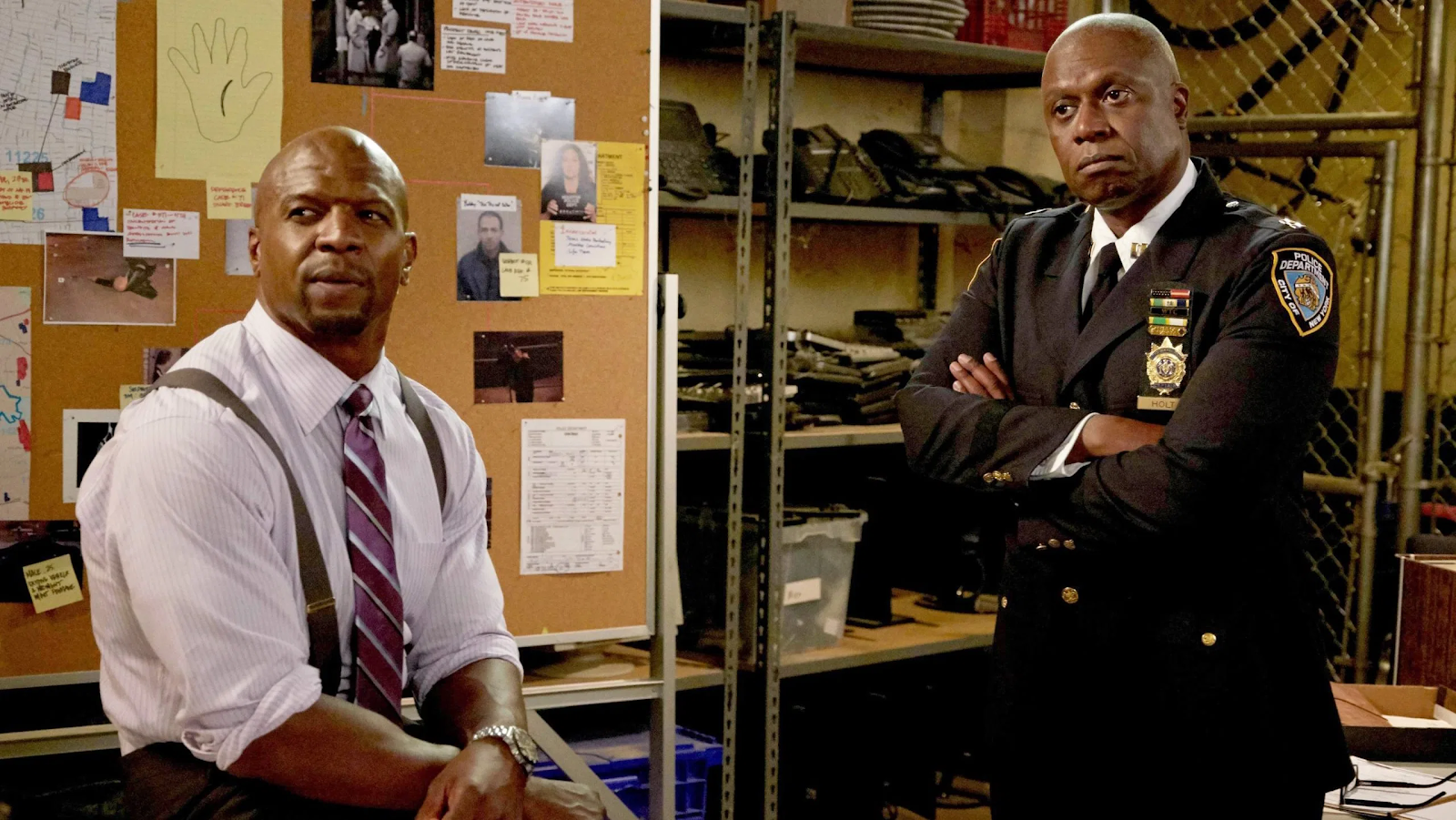
Racial Profiling
In Season 4 Ep. 16 “Moo Moo,” we see Terry Jeffords confronting a harsh truth about American society. While Sgt. Jeffords is off-duty in his neighborhood, he is arrested by a fellow officer, for the simple reason that he’s a Black man. The African American paradigm of being targeted, profiled, and unjustly abused or attacked is a sad racial reality that continues to exist in this day and age. When you look at the likes of Trayvon Martin, Michael Brown, Philando Castile, and countless others, getting aggressed and shot by a police officer can become a daily fear. And it’s especially hard to know that the police officers who harm them are usually protected under vaguely defined laws, and don’t suffer any retribution for their abuse of power or murder. If interested in reading more, read this illuminating LA Times Article. In “Moo Moo,” Terry also has to grapple with the ethical corruption and racism within his own police organization.
Sexual Harassment
Likewise, in “He Said, She Said” (Season 6, Ep.8), Brooklyn Nine-Nine doesn’t tip-toe around the issue of sexual harassment in the workplace. Amy takes on a case that appears to be an innocent office-related injury at first glance. When she digs a little deeper, she finds out the injury was a result of self-defense against sexual assault. However, the victim initially decides to drop the case because of the negative effect coming forward would have on her career. On top of that, Amy wrestles with the memory of her assault which happened when she became a detective. By relating it to her own experience, we see how morally abject and predatory a police station can be. We also see that fighting for this case is helping Amy cope with her trauma. By delving into Amy’s psyche, we explore the issue of having to face your aggressor at your workplace through the lens of a familiar character.
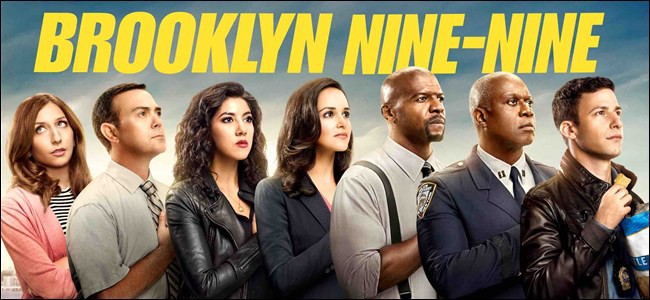
So while these are both very charged and painful topics, Brooklyn Nine-Nine’s approach is tactful. They highlight the injustice and the struggle and air topical episodes that address everyday issues that pertain to police brutality and the #Me Too movement. They create an inclusive environment where different voices are being heard and different experiences are broadcasted. By doing that, we get a richness not only in the substantive variety of characters but also in the depth of the storytelling.
Through the use of three-dimensional characters and by tackling urgent topics that might be glossed over in less aware sitcoms, Brooklyn Nine-Nine shines through as a solid reference point for how to use diversity in comedic television.
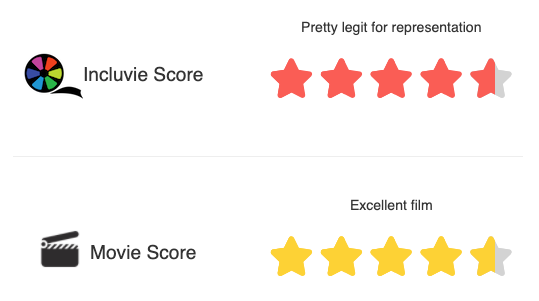
Brooklyn Nine-Nine is available to stream on Hulu.
(Note: This article was originally published by Mick Cohen-Carroll on Medium.)
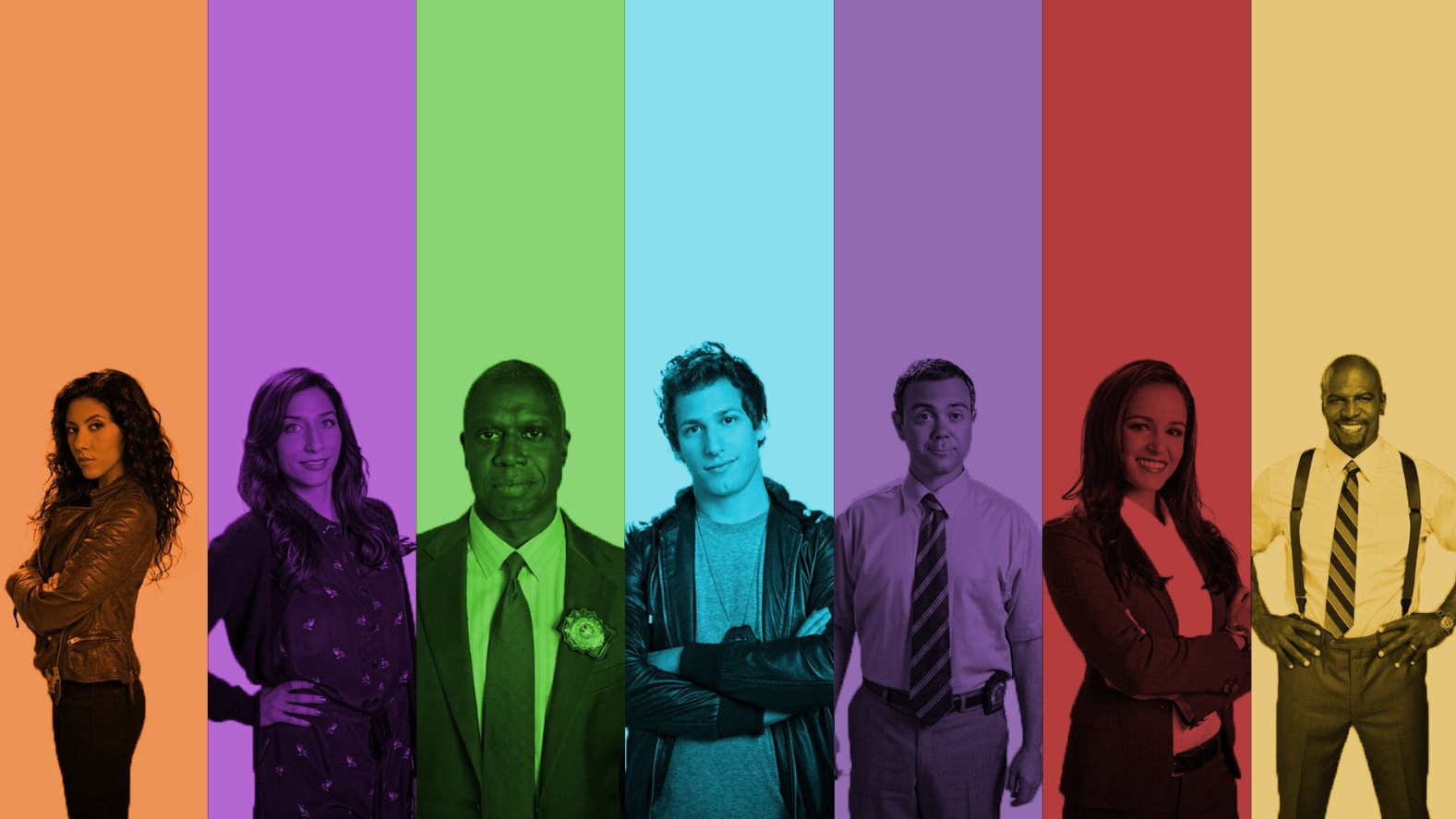
Comments